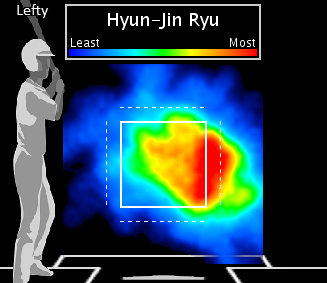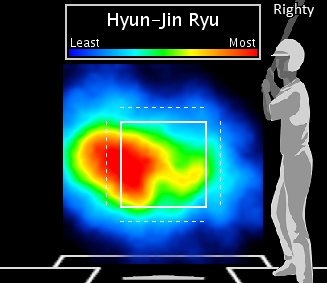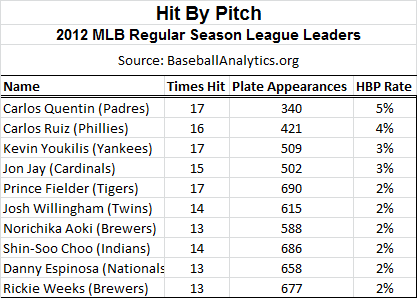No one likes all the elements of the new draft that began last June. Yes, as several rebuilding general managers have observed, it pushes the dollars to the free agent market; hence the larger revenue clubs still control that market. It takes away from clubs’ ability to build from the base up, as well as restricts their ability to use the in-season trading deadline deals to substantially impact and redevelopment organization.
That said, in 2013, the draft worked. The team that earned the first pick, the Houston Astros, was able to select the highest-rated pitcher in the talent pool, Stanford’s Mark Appel. The team that earned the second pick, the Cubs, got the most highly sought bat in San Diego’s Kris Bryant.
Appel is happy. He is from Houston, and as the Thursday night extravaganza wore down, he tweeted his excitement, “I’m coming home, I’m coming home, tell the world I’m coming home.” The last place ‘Stros immediately released media stories about Appel’s little league career in Houston.
Bryant clearly was happy, going to Chicago and being part of a lineup that by 2015 could include Anthony Rizzo, Starlin Castro, Jorge Soler and Javier Baez, a lineup that should make a lot of Old Style drinkers very happy on sunny midweek afternoons.
The Cleveland Indians are happy. Another general manager called Chris Antonetti Friday and told him “you may have gotten the best player in the draft” in Georgia high school outfielder Clint Frazier. “With that personality, that energy, that bat speed and love of the game he could own Cleveland,” the other GM told Antonetti, and we know that while the Indians may be much improved, if Frazier and last year’s top choice (shortstop Francisco Lindor) and Trevor Bauer impact the team and the market two years from now, they could have a long term affect on the market restoration.
The Miami Marlins are happy. Colin Moran is the high on base, low strikeout hitter they eventually want in the front third of their lineup, and while they know that once Frazier was gone Moran preferred a Fenway Park built for his hitting skill set, they went ahead and essentially let the National market be damned and grabbed the player they wanted.
And while Scott Boras dislikes the way the implemented system restricts draftees and free agents, in the end, even he was happy. He still can point to the fact that he represents the top two picks, Appel and Bryant, who likely will end up with the biggest contracts. He also represents Indiana State left handed pitcher Sean Manaea, who despite an injury-plagued season will still get more than a normal second rounder, as the Royals took a below-slot pick in the first round to be able to go well above slot with picks below the first round, in this case Manaea.
Now, this does not make the new system a better way to balance the incoming flow of talent and allow the small markets to do the Pittsburghs, Tampa Bays and Clevelands once couldn’t do—take whom they chose, not beholden to signability.
“I’m the first to appreciate that there are flaws in this system,” says one small market general manager. “ But I think the way the slotting system has been laid out that the draft is more of a straight talent selection process. Under the old system, small market teams had a very difficult time trying to compete with the big market teams that tried to use the draft, like Boston and Detroit and Texas. Now because their available cash pools are finite, they cannot take high reward players that slipped because of signability in later rounds and pay them first round money. I found most agents this year understood the reality that there is a finite amount of cash available, and they have to adjust.”
“People in our draft room were surprised by the way the draft unfolded in that the picks in many ways went the way we had the players lined up,” says one scouting director. “Several times we were prepared for two or three players with our next pick and those players were picked off in front of us. This draft clearly had more of a sense of meritocracy than those of the past. After the second or third round, the importance of the area scouts and their ability to not only judge talent but know all the nuances of each player’s signability is more important than it has been for years, since the draft became such a high-priced pool. The back-channel deals are more difficult to make. Teams clearly don’t care if someone else has a deal behind them, in many cases, if a team wanted someone, it took him no matter what might have been promised later on.”
The Yankees, Red Sox and Rockies all felt the draft essentially went as all three teams had their boards lined up. “Maybe this year is the outlier,” said one scouting director. “But I think a lot of teams saw this the same way.”
For instance, there was a strong sense that when the Royals took Stephen F. Austin shortstop Hunter Dozier with the eighth pick of the first round that they would sign him well below the $3.14M slot and use the money on Westlake Village, Cal. High school pitcher Phil Bickford, one of the “unsignable” high school talents, with the 34th supplemental slot. The Blue Jays didn’t care and took Bickford with the 10th selection, so the Royals used that supplemental pick to draft Manaea. The Red Sox believed that when Oklahoma high school catcher—and projected first round pick—Jonathan Denney—began to slide that his agents had a deal lined up for the third round. They didn’t care about the possible deal and went ahead and took Denney with the seventh pick in the third round, and if he goes to college, they get that pick back next June.
“There was still a ton of backdoor calls to ascertain signability and guarantee some manipulation,” says one agent. “More than you could imagine. But the days of trying to guide a kid down to the sixth round so some big market team could jump in and give him $2M may be over. This system probably held the Dodgers, Yankees, Cubs, Red Sox and Angels at bay.” The Red Sox clearly had Frazier and Moran at the top of their list with the seventh selection of the first round. They were grabbed by the Indians and Marlns with the picks immediately before them, and when they were able to draft Indiana high school lefthander Trey Ball, the organization from general manager Ben Cherington to scouting director Amiel Sawdaye to their scouts were very happy that the organizational mantra to build around pitching was fulfilled. “I saw every one of the top ten pitchers in this draft, right up to Appel,” says one National League GM known for his pitching acumen. “For me, Ball has the highest projectionable upside of any pitcher. He’s an incredible athlete and as he keeps developing has a chance to be a star left handed starter.”
No one knows. Five years from now, Frazier or Austin Meadows (Pirates) or Dominic Smith (Mets) may have more value than Bryant or Moran. Kole Stewart or Ball may have more value than Appel or Jonathan Gray (Rockies). We know that five pitchers from last year’s draft are already in The Show, but the rookie pitcher with the greatest impact may be the Dodgers’ Hyun-jin Ryu. No position player from last June’s draft has had the impact of Yasiel Puig. And Cuban exile Miguel Gonzalez, once a guy with the Cuban National Team who is putting his career back together in Mexico while being watched by more than a half-dozen teams, could be in the majors sooner than anyone drafted this week.
We don’t know because we don’t know how pitchers will react to different baseballs and starting games every fifth day. We don’t know about adjustments hitters have to make.
Fine, but the draft remains very important. And while because of either scouting mistakes or adjustment breakdowns, injuries or personal issues, there will be disappointments, there will be surprises. But if one of the purposes of overhauling the draft was to give bad teams better shots at the best players—unlike the year the Padres had to take Matt Bush instead of Stephen Drew or Jered Weaver because of money—then this draft worked. Appel isn’t getting Strasburg money, and doesn’t seem to care. Bryant isn’t getting Ackley money, and doesn’t care.
If Houston and the Cubs got the right guys, the draft worked, at least to a degree. If the real paydays begin after two or three years of major league service instead of performance in the ACC or Cape League, that is right. In a game based around merit, meritocracy isn’t a bad thing.
 David Golebiewski |
David Golebiewski |  Monday, August 19, 2013 at 9:01AM
Monday, August 19, 2013 at 9:01AM


 Dodgers | tagged
Dodgers | tagged  Dodgers,
Dodgers,  Hyun-jin Ryu
Hyun-jin Ryu


